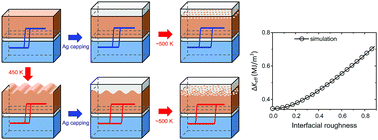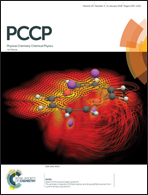Enhancing the magnetic anisotropy energy by tuning the contact areas of Ag and Ni at the Ag/Ni interface
Abstract
Modifying the interfacial conditions of magnetic layers by capping with overlayers can efficiently enhance the magnetic functionality of a material. However, the mechanisms responsible for this are closely related to the crystalline structure, compositional combinations, and interfacial quality, and are generally complex. In this contribution, we explored the use of Ag ultrathin overlayers on annealed  . A method for preparing magnetic layers with different levels of enhanced magnetic anisotropy energy was developed. The method essentially involves simply modifying the contact area of the metallic/magnetic interface. A rougher interface results in a larger contact area between the Ag and Ni layers, resulting in an increase in magnetic anisotropy energy. Moreover, post-annealing treatments led to the segregation of Ni atoms, thus making the enhancement in the coercive force even more efficient. A model permits an understanding of the contact area and a strategy for enhancing the magnetic anisotropy energy and the coercive force was developed. Our approaches and the developed model promise to be helpful in terms of developing potential applications of ultrathin magnetic layers in the area of spintronics.
. A method for preparing magnetic layers with different levels of enhanced magnetic anisotropy energy was developed. The method essentially involves simply modifying the contact area of the metallic/magnetic interface. A rougher interface results in a larger contact area between the Ag and Ni layers, resulting in an increase in magnetic anisotropy energy. Moreover, post-annealing treatments led to the segregation of Ni atoms, thus making the enhancement in the coercive force even more efficient. A model permits an understanding of the contact area and a strategy for enhancing the magnetic anisotropy energy and the coercive force was developed. Our approaches and the developed model promise to be helpful in terms of developing potential applications of ultrathin magnetic layers in the area of spintronics.



 Please wait while we load your content...
Please wait while we load your content...